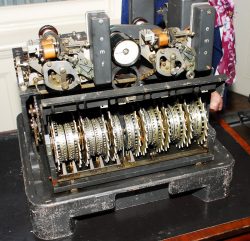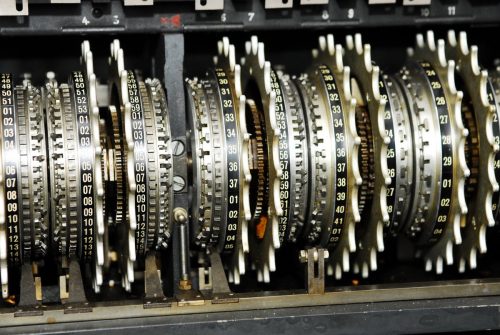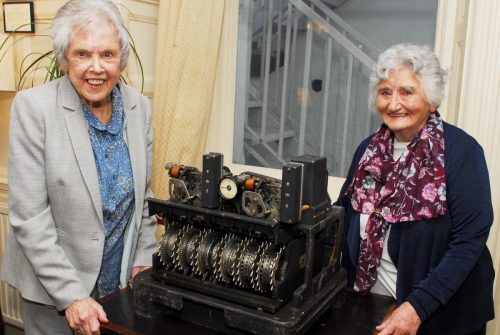 HMGCC to partner TNMOC in reconstructing the missing German wartime cipher machine motor
HMGCC to partner TNMOC in reconstructing the missing German wartime cipher machine motor
A radio appeal has found a crack team to reconstruct the missing motor of an extremely rare Lorenz SZ42 on long-term loan to The National Museum of Computing (TNMOC). The Museum is eager to display the Lorenz with its reconstructed motor alongside the reconstructed British equipment that demonstrate how the most complex cipher used by Hitler and his High Command was routinely broken at Bletchley Park during the Second World War.
The partner reconstruction team is from Her Majesty’s Government Communications Centre (HMGCC) and will be able to offer support in the wider context of the reconstructed motor. HMGCC believes that the project will provide valuable and relevant experience and learning for some of its apprentices. Drawing on college training, the team will work under the guidance of senior HMGCC staff and restoration specialists from TNMOC.
 The Lorenz SZ42 at TNMOC is one of only four Lorenz SZ42s still known to existence. During the war up to 200 were in use and the one at TNMOC was used at the German HQ in Norway. It has been given on long-term loan by the Norwegian Armed Forces Museum who have had the machine in storage since 1973 when it was given to them by the Norwegian secret services which had in turn seized it at the end of the war.
The Lorenz SZ42 at TNMOC is one of only four Lorenz SZ42s still known to existence. During the war up to 200 were in use and the one at TNMOC was used at the German HQ in Norway. It has been given on long-term loan by the Norwegian Armed Forces Museum who have had the machine in storage since 1973 when it was given to them by the Norwegian secret services which had in turn seized it at the end of the war.
Andy Clark, Chairman of TNMOC, said: “It is very fitting to have HMGCC, an organisation originally set up in 1938 to address the needs of the government to maintain global communications, as a partner in the reconstruction of the Lorenz SZ42. Thanks to the BBC Radio 4 broadcast by Paddy O’Connell, we had a number of very generous offers to reconstruct the motor. The multi-skilled engineering capabilities and the HMGCC history clinched the decision for us.”
An HMGCC spokesman said: “Based at Hanslope Park near Bletchley Park, HMGCC has a long history in the design and manufacture of secure communications equipment. The wartime work at Bletchley Park, including breaking the Lorenz cipher, was instrumental in the birth of modern computing and the development of what we now call cyber security. HMGCC looks forward to its young apprentices reconstructing this machine in support of TNMOC’s wider work to explain why Bletchley Park’s legacy still matters today.”

The team will start work very soon and hopes to have the reconstruction ready in summer 2017. John Whetter, TNMOC volunteer who was instrumental in securing the loan of the Lorenz SZ42, is excited about the prospects: “The latest technology will be used to recreate the 75-year-old Lorenz SZ42 motor. The HMGCC team will take three-dimensional images of an existing Lorenz motor and then reconstruct it using 3D printing techniques. Externally, the motor will be almost indistinguishable from an original.”
Erling Kjærnes, head of the Norwegian Armed Forces Museum which has loaned the Lorenz, said “We are very pleased that the loan of the Lorenz SZ42 to The National Museum of Computing is turning out to be quite an adventure. We very much look forward to seeing the reconstruction of this part of the equipment.”








